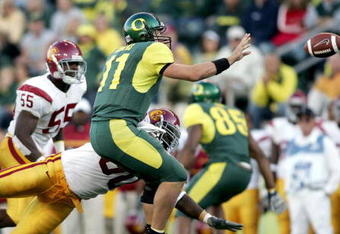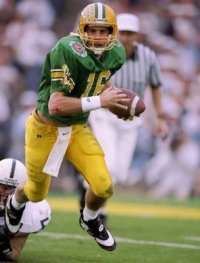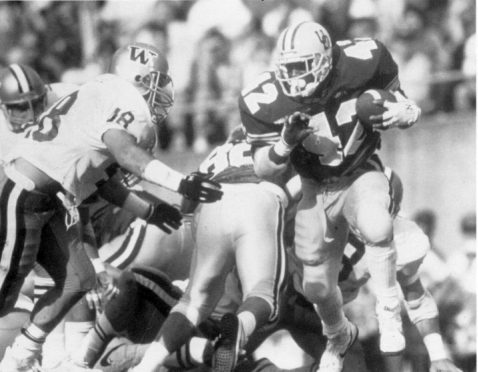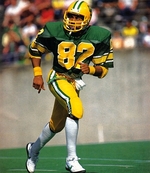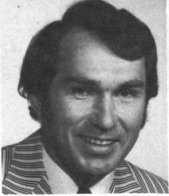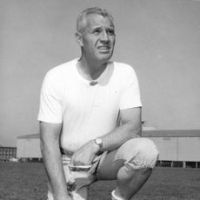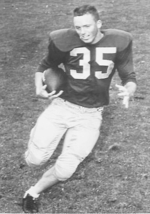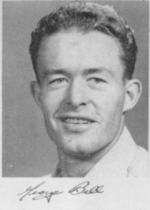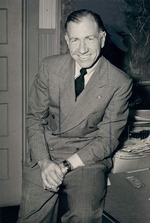Dammit, Stanford.
Oregon’s post-WW2 record vs Stanford is competitive, with the Ducks holding a 30-27 edge in the series since 1945.
But the record doesn’t show that time and again, the CardIndianals have shot an arrow/sprung a sharpened tree branch into the hearts of Duck fans - either ruining the chances for a bowl bid or otherwise destroying the hopes for a season. And, strangely, it doesn’t seem work the other way nearly as often.
By my reckoning, there have been eight nine instances since WWII that Stanford has, in one fashion or another, ruined Oregon’s season… and three times Oregon has returned the favor.
- 1954 – Oregon is ranked #16 in the AP poll and has an eye on a Rose Bowl bid. With future #1 pick George Shaw at QB, the senior-laden Webfoots are seen as ten-point favorites to knock off Stanford in Multnomah Stadium. But versatile fullback Jasper McGee broke a rib in practice and missed the game; Shaw pulled a thigh muscle in the opening victory over Idaho and wasn’t 100%. Stanford, the only team coached by high-tops, was led by future NFL stalwart John Brodie. The Indians scored quickly, took advantage of three Duck fumbles, and held on for an 18-13 win despite being outgained almost 2-1 by Oregon.
The game was marred by numerous penalties for unsportsmanlike conduct on both teams, and after the final gun a battle royal erupted on the field, with Stanford players engaging Oregon partisans from the stands, resulting in a trip to the hoosegow for one of the visitors. Ducks fell out of the Top 20 the next week and wouldn’t return for two years, finishing the season at 6-4. -
1964 – Len Casanova’s best team came into the Stanford game 6-0 and ranked #7 in the AP poll. They hadn’t lost since the previous November 2nd. Never mind that the gaudy record had been earned against teams with an aggregate record of 12-20-3; Eugene was gripped with Rose Bowl fever, and the three upcoming games were seen as mere tune-ups before a Civil War that would decide the conference title. Stanford was 2-4, had just lost to #2 Notre Dame 28-6, had lost seven straight to the Webfoots, and hadn’t won a road game in two years.
Statistically the game was a blowout – for Stanford. The Tribe outgained Oregon 374-73, had a 21-5 edge in first downs and ran off 78 plays to Oregon’s 45. But Stanford’s drives kept stalling in the red zone; they missed three field goals, allowing Oregon to keep it close. Oregon led late in the 4th quarter, but a short punt from horrible field position gave Stanford the ball on Oregon’s 39 with 54 seconds left. As they’d done all day, the Oregon DBs failed to cover their men; Stanford’s Dave Lewis found HB Bob Blunt streaking down the sidelines, giving them a first down at the Oregon 12. Two plays later, Stanford K Brad Beck’s final attempt was true, giving the Indians an improbably 10-8 victory.
It’s hard to say with certainty that an Oregon win would have put the Ducks in the ‘65 Rose Bowl regardless of what happened in the Civil War. What can’t be disputed is that the Stanford loss made a CW win absolutely essential for a return trip to Pasadena… and of course that didn’t happen. - 1972 – A rare Oregon upset of a good Stanford team. The 1-5 Ducks, in Dick Enright’s first and penultimate season, hosted the #13 “Cardinals.” 17 point underdogs to 4-1 Stanford, the Ducks, who had given up over 2,000 yards rushing over its last six games, held their guests to 25 rushing yards, led 15-0 at halftime with the help of an 85 yard run by Donnie Reynolds, and held on for a 15-13 victory. The two-time Rose Bowl champions, sporting a new, less-racially-insensitive nickname and mascot, never recovered from the humiliation, going just 2-5 in conference.
- 1976 – Oregon was on a five-game losing streak, and had been outscored 151-39 including the last game, a 0-46 pasting at UCLA. Don Read needed a win over Stanford to keep his job. The stats were there; Oregon outgained the Cardinal, 425-265, and forced 10 punts. But Jack Henderson threw four interceptions, leading to 21 Stanford points, and the team couldn’t crawl out of its self-created hole. Played before a crowd very generously estimated at 18,000 in Autzen, Read’s final home game was a 28-17 loss. It was a testimony to the state of the sport in Eugene that nobody really cared. Read was fired a week later.
- 1987 – Oregon was 4-2 in Bill Musgrave’s freshman year, and although some of the bloom came off the Rose the previous week (a 41-10 loss to UCLA, where Oregon lost its first national ranking in 16 seasons), the ‘87 campaign could still have lead somewhere. Their upcoming opponents, other than ASU, were mired in losing seasons. This included Stanford, at 2-4. If the Ducks could get to 8-3, they’d see that first bowl bid since 1963. And, again, the stats were solidly on their side – outgaining the Cardinal 332-185, controlling the clock.
But as usual, Oregon killed itself against the Tree, with four turnovers – three in Stanford’s red zone. And when Brad Muster scored from the three yard line with 39 seconds left, giving the home team a 13-10 victory, you could hear the air coming out of Oregon’s season all the way from Palo Alto. The Ducks managed wins over lowly Wazzu and OSU to finish at 6-5, but there would be no bowl in 1987. - 1989 – On the Farm again, and another heartbreaking loss. Oregon was 2-0 and coming off a shocking 44-6 victory at Iowa. Stanford was 0-2, on a seven game losing streak, and had just lost to Oregon State for only the third time in twenty years. Feeling their oats, Duck fans bought up shirts that said “RESPECT – DEMAND IT!” Unfortunately, respect must be earned … and this year Oregon didn’t earn any from the Cardinal, blowing a 17 point fourth quarter lead and losing on a last-second field goal, 18-17. At least this loss didn’t keep Oregon out of post-season play, but the then-unproven-as-a-bowl-team Ducks might have looked much more attractive to games other than the Independence Bowl at 9-2 than they did at 8-3.
- 1993 – One of the most snake-bitten teams in Oregon history still had an outside chance at a bowl bid, but only if it could get past Stanford and OSU in its last two games. It couldn’t. Stanford came into Autzen, ran out to a 22 point lead and held on for a 38-34 upset victory behind QB Steve Stenstrom, who lit up the beleaguered Oregon secondary for 407 yards, leading to boos and catcalls from the home fans, and more calls for Rich Brooks to be replaced.
- 1995 – There was no way to know this at the time, but the late September upset of the #12 Ducks , 28-21, in Autzen by Ty Willingham’s Stanford team kept Oregon from repeating as conference champions. The Ducks only lost one other conference game in 1995 (to ASU); if they’d beaten Stanford, they would have been 7-1 and jumped over USC and Washington in the league standings. (Yes, the same would be true if they’d beaten ASU. Sue me.)
- 2001 — An upset loss at Autzen to the Cardinal keeps Oregon out of the national championship game.
- 2010 — #4 Oregon gives #9 Stanford its only loss of the season, 52-31.
- 2011 — #7 Oregon gives #4 Stanford its only loss of the regular season, 53-30.
- 2012 — #18 Stanford returns the favor from the past two seasons, giving Oregon its first regular season loss in overtime and derailing the Ducks’ national championship hopes.
Now that’s a rivalry.
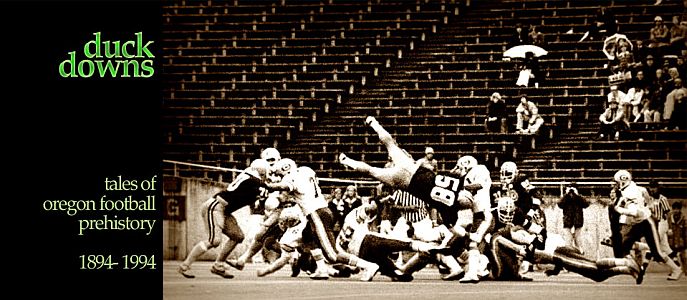
 benzduck
benzduck